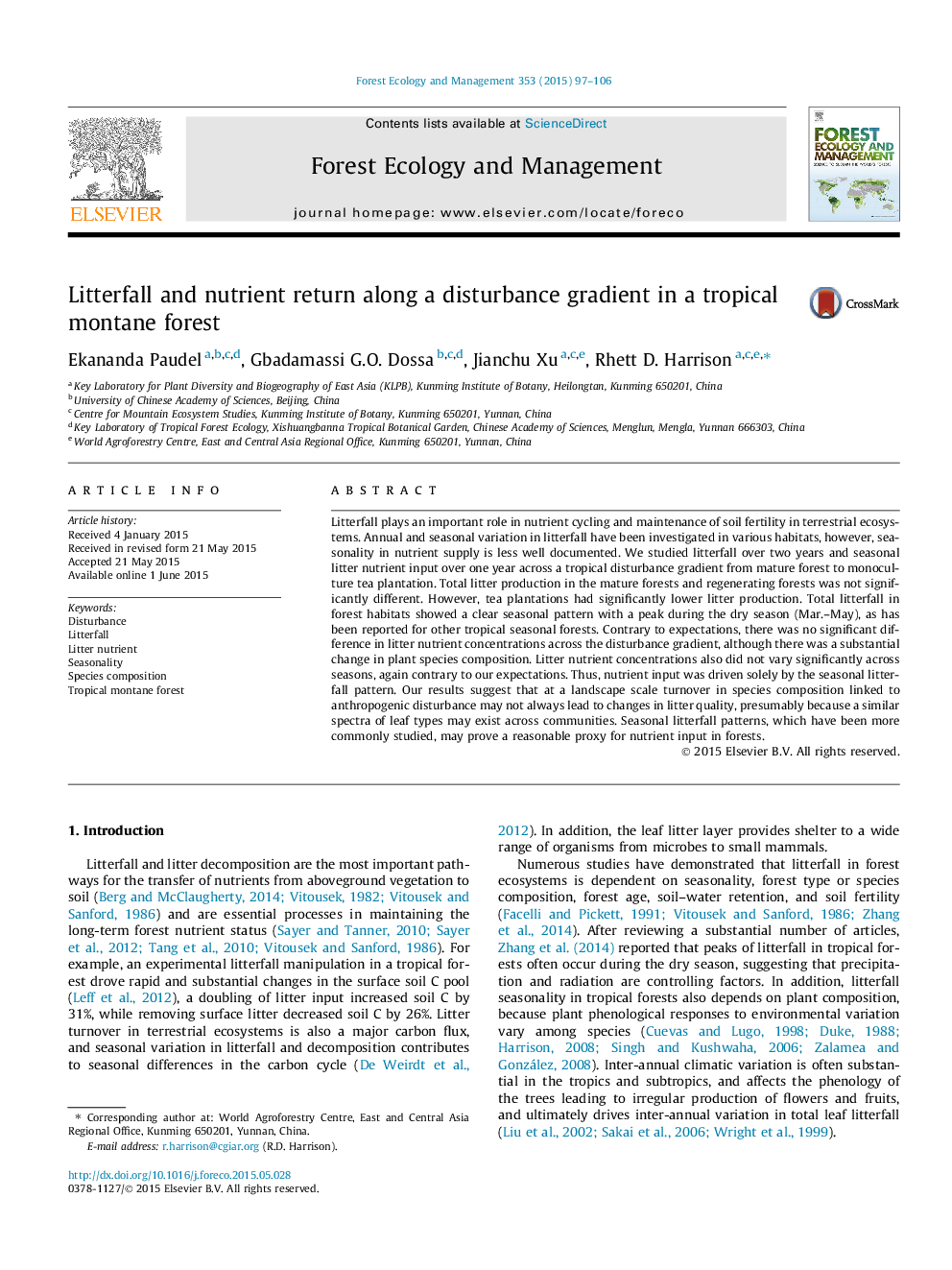| Article ID | Journal | Published Year | Pages | File Type |
|---|---|---|---|---|
| 86222 | Forest Ecology and Management | 2015 | 10 Pages |
•In forest habitats there was a peak of litterfall toward the end of dry season.•Total litterfall was significantly lower in open habitats compared to forests.•Litter nutrient concentrations did not vary significantly across seasons.•Litter nutrient concentrations also did not vary across the disturbance gradient.•Patterns of nutrient input were determined solely by the litterfall pattern.
Litterfall plays an important role in nutrient cycling and maintenance of soil fertility in terrestrial ecosystems. Annual and seasonal variation in litterfall have been investigated in various habitats, however, seasonality in nutrient supply is less well documented. We studied litterfall over two years and seasonal litter nutrient input over one year across a tropical disturbance gradient from mature forest to monoculture tea plantation. Total litter production in the mature forests and regenerating forests was not significantly different. However, tea plantations had significantly lower litter production. Total litterfall in forest habitats showed a clear seasonal pattern with a peak during the dry season (Mar.–May), as has been reported for other tropical seasonal forests. Contrary to expectations, there was no significant difference in litter nutrient concentrations across the disturbance gradient, although there was a substantial change in plant species composition. Litter nutrient concentrations also did not vary significantly across seasons, again contrary to our expectations. Thus, nutrient input was driven solely by the seasonal litterfall pattern. Our results suggest that at a landscape scale turnover in species composition linked to anthropogenic disturbance may not always lead to changes in litter quality, presumably because a similar spectra of leaf types may exist across communities. Seasonal litterfall patterns, which have been more commonly studied, may prove a reasonable proxy for nutrient input in forests.
